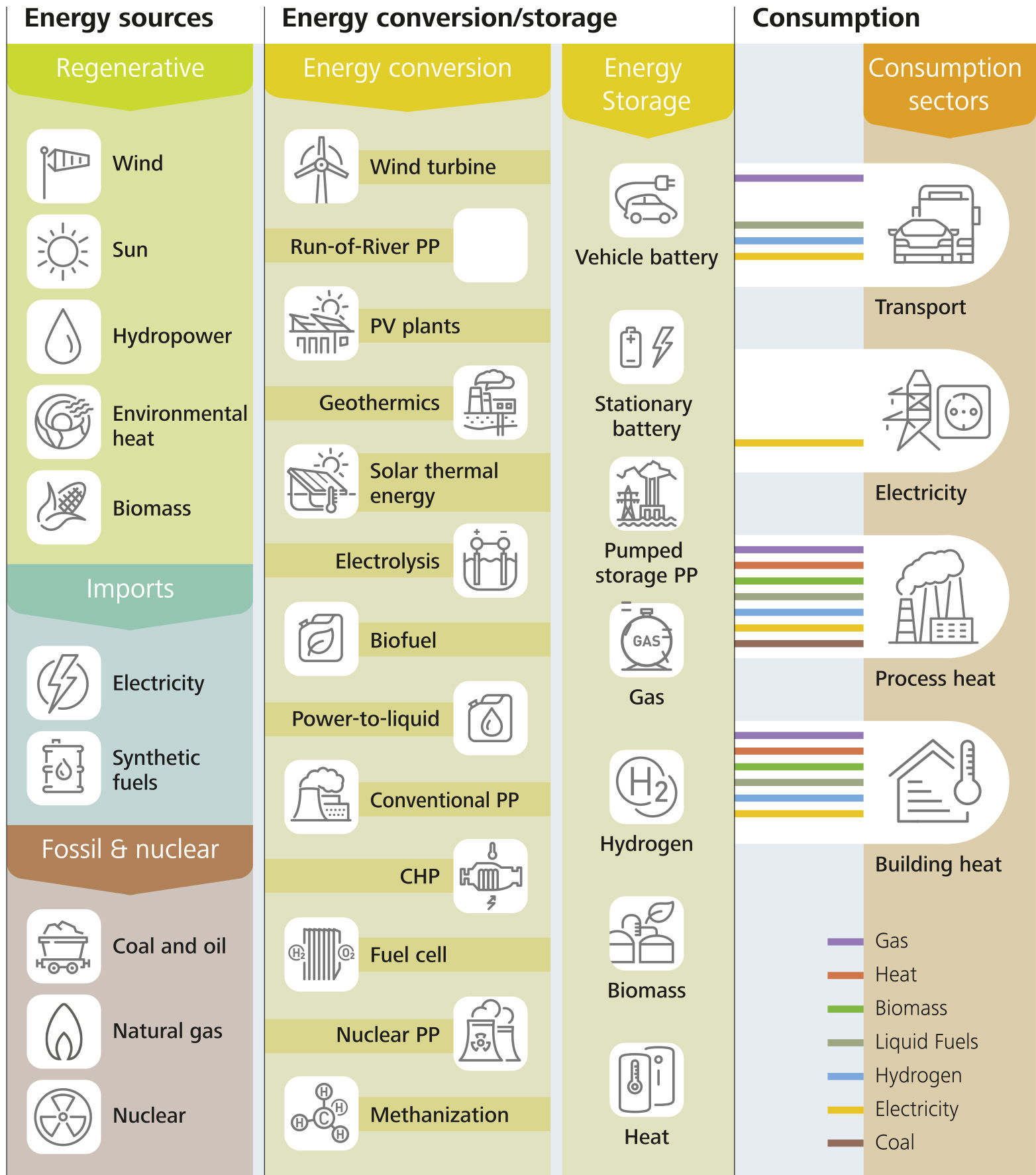Fraunhofer ISE: Climate Protection Targets in Energy Supply achievable
The study »Paths to a Climate- Neutral Energy System - The German Energy Transition in its Social Context « by the Fraunhofer Institute for Solar Energy Systems ISE examines development paths of the German energy system that lead to a reduction of energy-related CO₂ emissions between 95 and 100 percent by 2050. Achieving these climate protection goals in energy supply based on renewable energy sources is feasible from a technical and systemic point of view. However, social behavior is proving to be a decisive factor in the path the energy transition is taking and in the costs of system conversion.

For the study, the researchers looked at the paths, technical feasibility and costs of the energy transition in the context of various developments in social behavior and attitudes. They calculated four main scenarios: the Persistence scenario (strong resistance to the use of new technologies in the private sector), the Non-Acceptance scenario (strong resistance to the expansion of large infrastructures), and the Sufficiency scenario (societal changes in behavior significantly reduce energy consumption). They compared these with a scenario in which the achievement of objectives is neither promoted nor made more difficult (Reference scenario). The energy system model REMod (Renewable Energy Model) developed at Fraunhofer ISE was used to simulate and optimize the scenarios.
»The hour-by-hour analysis for the next 30 years shows that, despite a very high proportion of fluctuating renewables for the provision of electricity every hour and in all consumption sectors, a secure supply can be achieved,« explains Prof. Dr. Hans-Martin Henning, Institute Director of Fraunhofer ISE and one of the authors.
The results show that electricity produced from renewables will become the most important primary energy and that a sharp increase in electricity demand can be expected due to sector coupling - 2 to 2.5 times the current value. To achieve this, the installed capacity of wind and photovoltaic systems must be increased by a factor of four to seven compared to the total capacity installed today.
Effort and costs to achieve climate protection goals vary considerably
The effort and costs required to achieve the German climate protection goals depend largely on the framework conditions that are shaped by the behavior and attitudes of society. For example, if energy is used more sparingly (Sufficiency scenario), the necessary number of plants for the conversion, storage, distribution and use of energy is substantially lower than if combustion technologies for heat supply and mobility continue to be used (Persistence scenario). The net additional costs of the scenarios examined over the next thirty years compared with a business-as-usual scenario range from EUR 440 billion for the Sufficiency scenario to EUR 2330 billion for the Persistence scenario. In relation to Germany's gross domestic product in 2019, this corresponds to values ranging from 0.4 percent (Sufficiency scenario) to around 1.5 percent (Reference and Non-Acceptance scenarios) and up to around 2 percent (Persistence scenario). The majority of the additional costs (between 63 and 75 percent) are incurred for investments.
The model results make it also possible to calculate the development of CO2 avoidance costs over the next three decades - i.e. costs that would have to be charged on the emission of CO2 to compensate for the additional expenditure of the climate protection scenarios compared to a business-as-usual development. For the Reference scenario, the CO2 avoidance costs average around 150 €/t CO2, rising from around 50 €/t in the period 2021-2030 to just over 180 €/t in 2041-2050. The average values are significantly lower in the Sufficiency scenario at 50 €/t CO2 and highest at more than 230 €/t if the technologies used today are maintained (Persistence scenario).
Survey on study
The authors of the study are currently conducting a survey on their study and ask for participation. »The aim of the survey is to collect views and opinions of the readers on the future transition pathways in Germany and to get feedback on the overall study«, says Dr. Christoph Kost, Head of Group Energy Systems and Energy Economics at Fraunhofer ISE.
To take part in the survey, please use this link
Last modified: